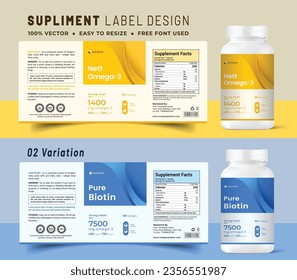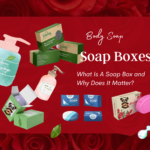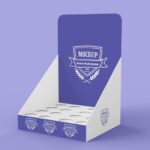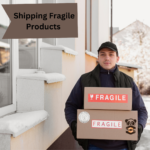Packaging Design |Five Design Tips to Get You Started
Understanding Packaging Design
Packaging design is a lot more than just a container; it is a critical part of branding, marketing, and consumer experience. An attractive package protects the product but indicates brand identity, values, and appeal to the target audience.Bad packaging, on the other hand, may also contribute to customer dissatisfaction, sales reduction, and diminished reputation of the brand.
At Panda Scientist, we are experts in custom packaging love solutions that are combined creatively, serve functionality, bring forth branded packages that really stand out. For new packaging designers, here are some 5 basics that can help you get started.
Design Aesthetic – What’s Your Packaging’s Vibe?
Packaging design should convey the identity of the brand and strongly associate it with the target audience. It is the first impression that is interpreted by a consumer with regard to the product, and it greatly influences the perceptions about it and buying decisions. Input key variables along such as your brand’s personality, value, and emotion before you design. Consider how your product fits into the lifestyle of your audience and what visuals-from colors and fonts down to materials best communicate your message. Such a well-thought-out design is more consistent and strengthens the recognition of a brand while enhancing the customer experience overall.
- What emotions do you want to evoke?
- Who is your target audience?
- How does your product fit into their lifestyle?
When it comes to designing your packaging, a serious intention regarding aesthetics will appeal to and captivate the eye whereby the product is recognizable and ambiently cool. Minimalism? Yes. Luxury? Of course. Eco-friendly? Certainly! Bright designs? You must! Still, regardless of your design approach, stick to a consistent theme. Think Apple, working with a minimalist yet modern appeal juxtaposed with a look of brands that work on environmentally-friendly packaging that emphasizes sustainable materials.
Tip 1: ROY G. BIV…CMYK…Red, White, and Blue
Understanding Color Theory in Packaging Design
The importance of color in packaging turns to the consumers’ perception and recognition of the brands. A color palette can elicit specific emotions, attract attention from store shelves, and determine how much the customers part with their hard-earned cash. Warm hues like red and orange create excitement and charge urgency; cool tones like blue and green suggest trust and calmness. Understanding color psychology and balancing, contrasting harmonizing, and consistent colors to the brand can enhance meaningful packaging designs.
- ROY G. BIV (Red, Orange, Yellow, Green, Blue, Indigo, Violet):As meaning and fact can never completely stand together, the interpreter should therefore somehow explore the existence of relevant facts which could create a change in meaning.
- CMYK (Cyan, Magenta, Yellow, Black): The standard color model for printing.
- Brand-Specific Colors (Red, White, and Blue, etc.): Some brands are really cool for standing out.
Choosing the Right Colors for Your Packaging
The colors you select for your packaging are essential in capturing attention and sending messages to the audience regarding your brand. Colors can evoke different emotions for consumers and it affects their buying decisions, and that is why the important thing is to choose shades that correspond to your identity and to your audience. A good color balance allows better visibility and reinforces brand recognition, providing a solid impression.
- Red: Energy, excitement, and urgency (great for food brands).
- Blue: Trust, reliability, and calmness (ideal for tech and health products).
- Green: Sustainability, health, and freshness (best for organic or eco-friendly brands).
- Black & White: Luxury, elegance, and minimalism.
Recognize these, and know the foundation for any design in order to project the rightful image for a brand.
Tip 2: Shake, Rattle, and Roll
The Importance of Structural Integrity in Packaging
Functional and practical for consumers, packaging should not just look good. Customers expect packages to not only look good but also protect the product inside from shipping and handling damage. Strong, pleasant, and convenient to open and use would describe a well-made package. Thoughtful packaging can really enliven the unboxing process, making it even more enjoyable and memorable for customers. Design and function are balanced, creating packaging that will add value to the consumer, create trust, and prompt repeat purchases.
- Durability:For damaged-free products, solid materials must be used during transportation and storage.
- Shape & Size Considerations: The packaging should fit the product very closely, reducing the overall quantity of material used.
- Material Selection:Prepare for an active role in increasing the environmental compatibility and structural strength by the selection of eco-friendly and moderately low-density materials.
A well-compiled holdup will certainly prevent all spills, cracking, injury, etc., offering customer satisfaction.
Tip 3: Is That a “Cool White” or a “Warm White”?
Understanding Shades and Finishes in Packaging Design
White may seem simple, but different shades and finishes create varying effects:
- Cool White: Crisp, modern, and professional.
- Warm White: Soft, inviting, and vintage.
- Glossy Finish: Reflective and premium.
- Matte Finish: Subtle and sophisticated.
- Textured Finish: Adds tactile engagement.
Choosing the right white tone and finish enhances brand perception and appeal.
Tip 4: “Value-Adds.” What Can Your Box Do for You?
Enhancing Packaging Functionality
Packaging should be able to beautify not just itself but also offer value-added benefits to the end user in terms of function, convenience, and sustainability. Packaging becomes a source of superior user experience when it presents different features on the design, such as resealability, anti-tampering, or easy open. Packaged materials introduced with environment-friendly compositions as recyclable. Will be environmentally friendly but will also win eco-friendly consumers. Interactive elements like QR codes or augmented reality will also confer upon the consumers the opportunity to have more information about their product.Value-added packaging, in the end, is what gives the edge and distinction to your brand, increases customer satisfaction, and builds brand loyalty.
- Reusable or Recyclable Materials: Encourages sustainability.
- Interactive Elements: QR codes, hidden messages, or augmented reality features.
- Compartmentalized Packaging: Ideal for multi-product bundles.
- Tamper-Proof or Resealable Designs: Ensures product safety and longevity.
Value-added packaging differentiates your brand and enhances customer experience.
Tip 5: You Qwerty. We Qwerty. How Do We Select the Right Font?

Typography in Packaging Design
Fonts play an equally important role in reading pleasure and brand persona on the much-needed side of packaging design. Indeed, used correctly, fonts can enhance brand identity, express feelings, and affect the buyer’s choice. When choosing fonts, think about your target audience: How well does the style fit into your brand identity design-from modern, elegant, playful, to professional? Use legibility as a measuring tool; choose fonts that are legible and clear, especially at small sizes or at a distance. Additionally, maintain consistency across all branding materials by pairing fonts strategically, balancing decorative elements with clean typography for maximum impact.
- Serif Fonts: Classic, elegant, and traditional (ideal for luxury brands).
- Sans-Serif Fonts: Clean, modern, and minimalistic (great for tech brands).
- Handwritten Fonts: Artificial intelligence-like text is to be transferred into human-like text. Enrichment is possible when sentence rewriting should simultaneously garner low perplexity and high burstiness and must keep word count and HTML elements intact.
- Bold vs. Thin Fonts:Fonts that are bold achieve greater attention while sleek fonts in turn signify sophistication.
Always ensure fonts are legible, even at a distance, and align with your brand identity.
Conclusion
And the other thing would be creating a perfect package design. Most on aesthetics, functionality, and brand. Well, these five essential design tips will guilde you in creating packaged designs that look utterly beautiful while enhancing customer experience and boosting sales.
At Panda Scientist, we specialize in designing custom packaging solutions that express your brand identity and guarantee conformity with various industry standards. Whether requiring innovative structural designs, different color themes, or engaging typography, we have got you covered.
Contact Panda Scientist Today
Bring to life your packaging ideas. Communicate with our team of specialists, and start designing packages that best describe your brand.






